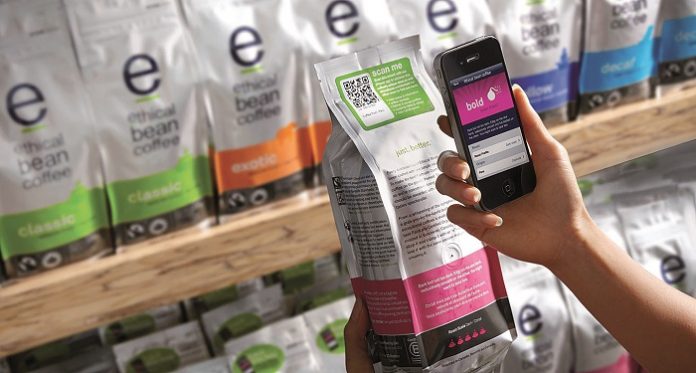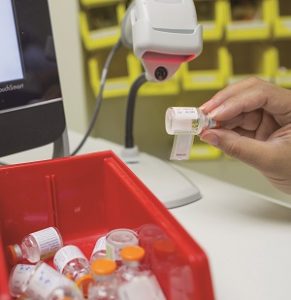
The availability of counterfeit goods has become a global issue. According to the Counterfeit Intelligence Bureau (CIB) of the International Chamber of Commerce (ICC), counterfeit goods make up 5 to 7% of world trade. Among the leading industries seriously affected by counterfeiting are software, music recording, motion pictures, luxury goods, fashion garments, sportswear, perfumes, toys, aircraft components, spare parts, car accessories, food and pharmaceutical products.
In India, according to a study by the The Associated Chambers of Commerce (Assocham) fakes worth `20,000 crore are being sold in the Indian market annually. Another study reveals that about 10 to 30% toiletries, cosmetics and packaged foods are fake. Market research by the International Anti-Counterfeiting Alliance (IAA) states that 35% (about `2,000 crore) of the automotive parts worth sold in India are bogus. The problem is huge and is becoming bigger and worse. Presently, Indian pharmaceutical companies produce about 20 to 22% of the world’s generic drugs (in terms of value) and therefore, counterfeiting is a subject that has great relevance for the industry.
Packaging innovations
Packaging innovations primarily enable the authentication of an product, either by industry investigators or ideally, by the public. It must be stressed that security devices on packaging components provide no assurance as to the authenticity of the contents which might have been substituted or adulterated. Security devices alone do not reduce counterfeit, but innovative package design make it easy to detect counterfeit products.
A number of technologies have been developed in the field of packaging to prevent limitation of goods. These technologies use newer materials, devices like caps and closures, new structural or graphic design of labels as well as various print techniques. Pharmaceuticals products are considered to be most critical as duplicate medicines would pose a serious threat to health. The important types of security features which are commonly used in the pharmaceutical industries are discussed below.
Overt and covert features
Authentication of medicine is generally done by overt or visible features. Such features will be significantly visible and complex, thus expensive to reproduce and include optical variable coatings with changing colors, thermochromic ink and watermarks. Inkjet printing is commonly used for printing variable text on packaging. Overt features might be incorporated with the tamper evident features for added security. These features include coin reactive printing, holograms, fluorescent ink, laser printing, inkjet coding, optical variable pigments, sandwich printing and covert or hidden features.
The main objective of covert features is to enable a brand owner to identify the counterfeit product while the general public will not be aware of its presence nor have the means to verify. Covert features also help control the details on a ‘need to know’ basis. If compromised or publicized, most covert features will lose some, if not all of their security value. Some examples of these features are hidden text, UV printing (visible under UV light), split line, magnetic ink, micro text, thermochromic ink, taggants and encrypted text visible under special light.
Forensic features
These are a wide range of light technology solutions which require laboratory testing or dedicated field test kits to scientifically prove authenticity. These are strictly a sub-set of covert technologies, but the difference lies in the scientific methodology required for authentication. Examples are chemical, biological and DNA taggants, micro taggants, isotope ratio, and others.
Track and trace techniques

latest generation of smartphones and tablets as
well as personal computers and ensures a highly
secure and very friendly user experience
A number of track and trace applications are under development for the pharmaceutical sector, although the principles have been established for many years. This technology involves assigning a unique identity to each stock unit during manufacture which remains with it through the supply chain until its consumption. This identity will normally include details of the product name and strength, the lot number and the expiry date — although in principle, it may simply take the form of a unique pack coding which enables access to the same information held on a secure database. The encoded data can be read at a distance by radio equipment.
These serve a number of distinct functions — tracking an item through the supply chain to each point where there is the facility for data capture; providing tractability on the history of any item subject to limitation on the number of control points; and enable authentication of the data at any time and by implication of the pack or unit on which it is applied. Few examples of track and trace are sterilization, barcodes, RFID and unique surface marking or topography. Barcode systems use proven and existing technology, but lack the advantage of automation and remote scanning possible with RFID. However, RFID systems are not yet proven or robust and standards still need to be defined and agreed on.
Barcode techniques
Coding was the primary concept on which early anti-counterfeiting systems were based. It maintains that role and underlines the sophisticated packaging innovations available to the pharmaceutical industry in the 21st century. Initially, codes were one dimensional (1D) and as a result, the information that can be included in them is limited by the maximum available number of characters that can be scanned or printed at one time — generally 10 to 20. However, this barcode technology has been further developed into two dimensions (2D) and beyond 2D, RFID tags are developed.
RFID tag

counterfeit medicines can be harmful to the health
and well-being of a patient
RFID (Radio Frequency Identification Device) tags are becoming very popular as tools for identification of products. As they have a small microchip on board, they offer functionality that can be used for security purposes. This makes it possible to verify the authenticity of a product and hence to detect and prevent counterfeiting. RFID tags also have to be resistant against many attacks, in particular, against cloning of the tag.
The advantage of the RFID over 2D barcodes is that the barcode reader has to be near the product whereas the RFID reader can be located at a greater distance and does not have to be in a straight line or even visible. In addition, the RFID tag can be embedded in the product, eliminating the opportunity for it to be tempered with or removed and attached to another product. This has obvious value as an anti-counterfeit measure. In fact, the Food and Drug Administration USA, has stated that RFIDs are the most promising technology for implementing electronic track and trace in the drug supply chain. Despite their advanced utility, RFIDs are unlikely to supersede barcodes for all applications as they are more expensive and cannot be printed, copied or transferred electronically.
Data glyphs
The data glyphs are more advanced barcode technology wherein tiny digital encryption marks (or glyphs) are used to encode information, increasing scope for the inclusion of detailed packaging information. There is a wide potential of their use for invisibly coding the packaging of pharmaceutical products, especially in conjunction with advances in digital imaging software.
Package design
Packaging innovations in design could also be one of the solutions for counterfeiting. Some package designs like sealed cartons and aerosol containers have an inherent quality against counterfeiting. Some other design-based solutions are given below.
Induction sealed tagger — a process where heat is applied around the edges of the container made of either, glass or plastic over the aluminum foil-based tagger which makes the package tamper proof.
Lever lidded tins — a tagged aluminum foil diaphragm can be formed into the lid assembly prior to attaching to the ‘can’ body to make the package tamper proof.
Serrated spout on lined carton — a spout made of plastic or metal can be incorporated on the body wall of the lined carton. The spout can be opened up only after breaking the serrated portion to make use of this spout for dispensing. This kind of package becomes more tamper evident.
Use of tear tape at seal — the application of printed tear tape at the seal portion of cigarette carton makes the package more tamper proof because the seal cannot be removed without breaking the tear tape.
Secure packaging tapes — a secure packaging tape is equipped with a highly aggressive adhesive and features a unique design. The continuously varying serrated edge, rhombic pattern and semi transparent finish indicates clearly that the tape has been cut through and pasted over again and thus identifies counterfeiting.
Conclusion
Medicines save lives, prevent diseases and epidemics, only if they are safe, are of good quality and are used rationally. The use of unsafe, substandard, ineffective and counterfeit medicines can be harmful to the health and well-being of a patient.
For this reason, packaging innovations in terms of anti-counterfeit technologies need to be developed in a continuous manner. Since there is no single technology that can solve counterfeiting, a secure strategy will almost certainly involve a mixture of technologies, often in combination. Moreover, effective and regular surveillance by the field staff of the pharmaceutical industry, drug controller authority for stringent regulation, change to ethical mindsets in business and continuous educational programmes for consumers can be combined to overcome the counterfeit problem.
Dr NC Saha is the director and principal executive officer of the Indian Institute of Packaging. He is also the secretary general of Asian Packaging Federation (APF), a board member of World Packaging Organization (WPO) and the chairman of nine sectional committees of the Bureau of Indian Standards (BIS) for the formulation of national standards on packaging. He has close to 28 years of experience.










